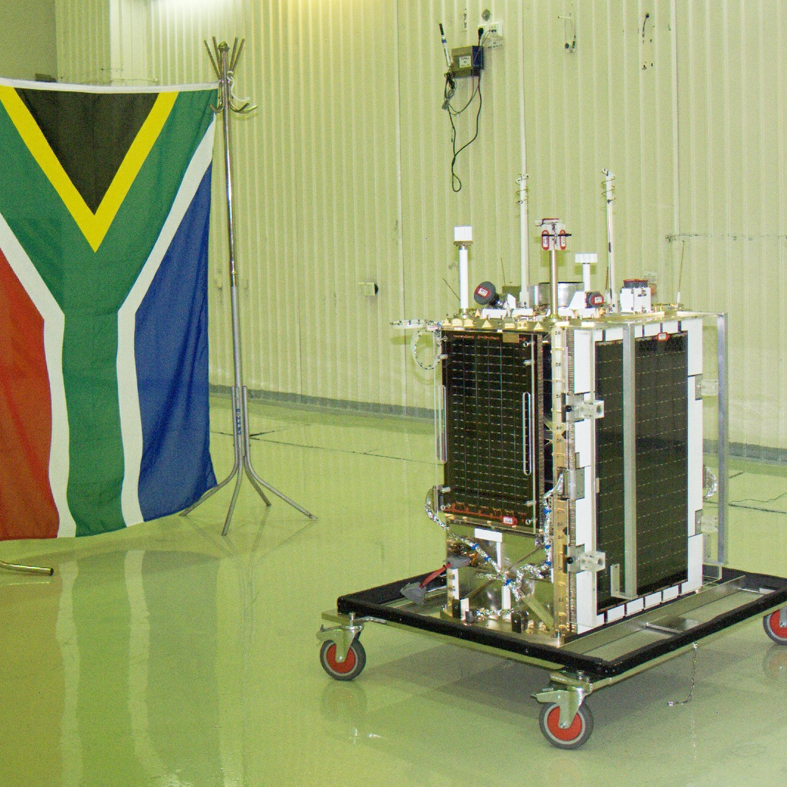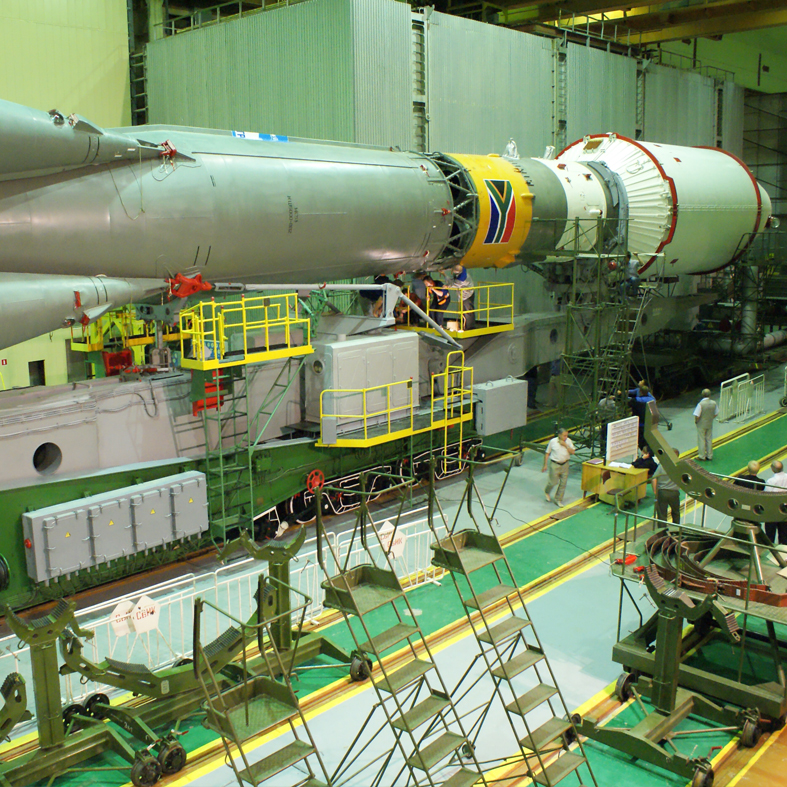Brought to you by: Hermanus Times
01/10/2009 02:01 PM – (SA)
South Africa and more particularly, the HMO (Hermanus Magnetic Observatory) have been engaged in an exciting space technology programme which resulted in the launch of the second SA satellite, Sumbandilasat, on 17 September from the Baikonur Cosmodrome in Russia.
This satellite was designed and built in SA by South Africans from the specialist microsatellite company SunSpace and Information Systems based in Stellenbosch. The R26 million satellite was funded by the department of science and technology. It is an 81 kg, 1×0.5 metres micro-satellite, and will orbit 500 kilometres above the Earth in polar orbit. It goes around the Earth in 100 minutes and will pass over South Africa four times a day. It is an imaging satellite and will produce images for agricultural and environmental use by the government, primarily tracking climate change, human migration, crop estimates and forestry.
One of the key components in the successful operation of a satellite is the ability to control its attitude and orientation so that it’s imaging cameras and antennas are accurately pointed towards the Earth at all times. On Sumbandilasat orientation sensing is effected by, among other things, a combination of a star camera and a three-axis fluxgate magnetometer.
The magnetometer allows the satellite control system to align the satellite with the Earth’s magnetic field at each point in its orbit. The HMO built the sensors for the Sumbandilasat magnetometer and performed the final calibration of the magnetometer, after integration of the sensors with the electronics built by SunSpace. The same sensor design, developed by HMO, was used for South Africa’s first satellite, Sunsat-1, launched in February 1999. For the first launch the HMO also built the electronics for the magnetometer. The same type of sensor has also been used on several other satellites since then. The HMO also has a VLF (very low frequency) wave experiment designed by Dr Andrew Collier, a research scientist at HMO, on board Sumbandilasat. This space weather instrument is a tool for space physics research and will enable scientists to listen to radio signals in space caused by lightning. Listen to VLF signals from space and read more about them at: http://spaceweather.com/glossary/inspire.html .
As part of World Space Week from 4 to 10 October, Jan-Albert Koekemoer, chief systems engineer at SunSpace, the company in Stellenbosch that designed and built Sumbandilasat, will give a public lecture at the HMO on Thursday, 8 October at 19:00. Call 0n 028-312 1196 to confirm your attendance.
Sumbandila satellite launched
2009-09-18 Elsabé Brits, Stellenbosch –
“Viva! SumbandilaSat, viva!” is gisteraand in dié dorp geskree terwyl Suid-Afrika se satelliet met ’n knal van vonkelwynproppe en handegeklap die ruimte ingestuur is.
Betrokkenes en belangstellendes het hardop die laaste 10 sekondes voor lansering saam afgetel.
Hulle het saamgedrom in die Reitz-saal by die Universiteit Stellenbosch (US) se fakulteit ingenieurswese. Die satelliet is presies om 18:55:07 by Baikonoer in Kazachstan met die Sojoes II-vuurpyl gelanseer.
Mnr. Hendrik Burger, tegniese ingenieur van SunSpace, het vir die groep wat die regstreekse beeldsending van die lansering op ’n groot skerm dopgehou het van Kazachstan af in Afrikaans kommentaar gelewer.
SumbandilaSat staan nou amptelik as ZA-002 bekend. Hy is gister om 20:40 deur die fregat losgelaat. Dit was die laaste van die loonvrag van vyf ander satelliete en ’n eksperiment aan boord.
Om 20:50 sou hy die eerste keer oor die grondstasie in Stellenbosch beweeg. Die ingenieurs van die grondstasie by die US kon toe die eerste keer met hom kommunikeer. Hy sou sowat nege minute bereikbaar wees. Om 22:10 sou hy die tweede keer oorbeweeg en ’n beter geleentheid vir kommunikasie moontlik maak.
Prof. Herman Steyn, groephoof: rekenaar- en beheerstelsels aan die US se departement van elektriese en elektroniese ingenieurswese, het gesê hulle sal ’n opdrag aan die satelliet stuur. Sodra hy daarop reageer, “weet ons hy het die lansering en reis tot dusver ‘oorleef’.”
Die Sojoes II-vuurpyl het vier fases: die eerste duur 120 sekondes, die tweede 285 sekondes en die derde 230 sekondes. In die vierde fase bly net die module van die vuurpylloonvrag oor, wat bestaan uit die fregat en die loonvrag.
Dit is in die vierde fase dat die loonvrag in die korrekte wentelbaan losgelaat word.
Me. Naledi Pandor, minister van wetenskap en tegnologie, en mnr. Bart Cilliers, hoof van SunSpace, is in Kazachstan en het die lansering in Baikonoer dopgehou.
Die departement van wetenskap en tegnologie het die projek gefinansier. Die US is gekontrakteer as projekkoördineerder om tegniese toesig te hou en nagraadse studente akademies op te lei. SunSpace was ’n subkontrakteur van die US om die satelliet te bou.
Die lansering is dié week twee keer uitgestel, maar die derde keer was Suid-Afrika gelukkig. Ook maar goed, anders sou die vuurpyl afgehaal en na die integrasie-fasiliteit teruggeneem moes word om die satelliet op die loonvrag se battery te herlaai, die brandstof af te tap en te wag vir ’n volgende lanseringsgeleentheid – waarskynlik eers tussen sewe en tien dae later.



